Instruction
Have the chipping yips? Here’s a drill to help
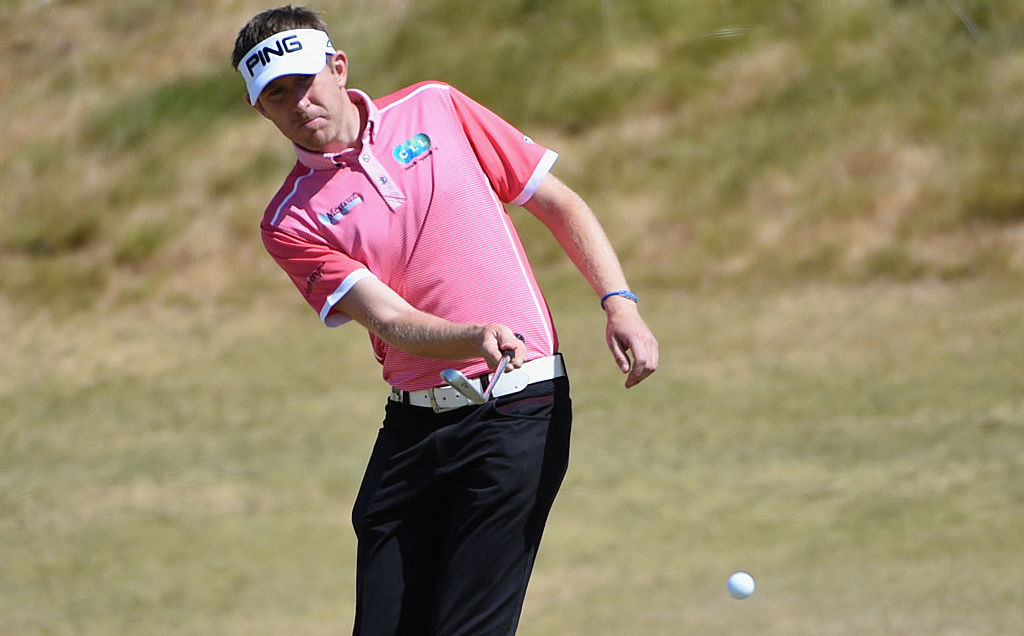
Note: If you don’t have the chipping yips, hit the back button right now on your browser. You don’t need to hear this stuff! But if you do have them, or are really struggling with your short game, read on.
—
Oh man, the chipping yips. They are such a horrible thing to watch, yet you can’t look away. It’s like watching a wreck at an Indy Car race.
Recently, I was asked if the chipping yips are curable, and unfortunately I have to say it’s very doubtful. I have never seen an amateur cure them in my lifetime on the lesson tee. Tiger Woods is the only player I’ve seen who has seemingly conquered them, but I will withhold my verdict until he comes back to play in 2017.
Generally, the chipping yips start as a mechanical issue, leading to chunks and skulls, or just poor chip shots overall. Eventually, these poor shots erode confidence, and your brain starts tell your body you can’t handle the shot at hand. This inner doubt leads to some involuntary action as the club nears impact, making it very difficult to hit the golf ball properly. From there, unless you cross the wires mechanically, you are often left to struggle forever.
While I don’t think chipping yips can be cured, I do believe they can be suppressed, and that’s what the rest of this article is about. I can think of a few players off the top of my head who have battled this very issue:
- Brock Mackenzie, a Web.com Tour player, now chips with one hand.
- Chris Smith, a PGA Tour winner, chips cross-handed.
- Doug Barron, a former PGA Tour player, also chips cross-handed.
Let me get you to understand how the yips are often created, and give you a drill that will help you combat them if and when when they show up. Hopefully, you can make a mechanical change before things get too bad.
How a chip shot should look

On the backswing, there should be some type of loading of the club to create a slight bit of lag on the way down. This can be done with a quick setting of the wrists, which you see in Rory McIlroy’s move, or with the change of direction at the top, as Steve Stricker does. But either way, there needs to be a bit of load.
It’s this lag that must be maintained into and through impact in order to maintain solid and consistent contact around the greens.

Next comes the rotation or pivot of the body through the shot, which keeps “lag pressure” on the club shaft through the impact zone, and pulls the clubhead into the ball with solid impact alignments. This is mainly a function of the rear shoulder maintaining a constant velocity through impact. When it slows or does not rotate toward the target, the hands take over. And when the hands take on too much of a role, the golfer is left very vulnerable to the yips.
What a yip looks like
The main problem with chipping-yippers is their inability to keep the pivot moving through the shot. Of course, there are different types of yips that occur for various reasons, but this is by far the most common.

Here you can see this player has the club lagging, but notice the right shoulder. You can see it is staying too far “back,” and thus the shoulders are not opening up as quickly as they should at this point in the downswing.
An bad shot is about to occur. Yikes.

You can this see this shot was hit fat, and the right shoulder has moved forward very little from the last frame above. When the pivot slows, the player tends to fall backward, moving the low point rearward. And from there, you are in trouble.
So how do you stop sticking your pick in the ground?
The One-Hander

Set up with your rear hand on the grip as shown. Note that the handle and forearm form a letter “V” of a certain angle, and I don’t want to see that angle change.
The only way to achieve this is to use the pivot of your body to transport your arms, hands and club into impact, instead of flipping or blocking with your hands.

At impact (above), notice how far forward the rear shoulder has rotated! You can also see that the rear wrist is bent and the “V” is still intact, as it was during address.
 Even in the frame above, the right shoulder is still moving forward and the lag is still intact. This is the way to pitch the ball like a pro!
Even in the frame above, the right shoulder is still moving forward and the lag is still intact. This is the way to pitch the ball like a pro!
Still have doubts that the pivot of the body or right shoulder controls lag pressure? Check out this photo comparison below. There’s significantly more rotation in the right frame.

So take your time and understand that if you slap at the ball it’s not a problem with your hands; it’s a reaction to your pivot slowing down. Try the one-handed pitching drill and I promise you will improve.
Instruction
The Wedge Guy: Beating the yips into submission

There may be no more painful affliction in golf than the “yips” – those uncontrollable and maddening little nervous twitches that prevent you from making a decent stroke on short putts. If you’ve never had them, consider yourself very fortunate (or possibly just very young). But I can assure you that when your most treacherous and feared golf shot is not the 195 yard approach over water with a quartering headwind…not the extra tight fairway with water left and sand right…not the soft bunker shot to a downhill pin with water on the other side…No, when your most feared shot is the remaining 2- 4-foot putt after hitting a great approach, recovery or lag putt, it makes the game almost painful.
And I’ve been fighting the yips (again) for a while now. It’s a recurring nightmare that has haunted me most of my adult life. I even had the yips when I was in my 20s, but I’ve beat them into submission off and on most of my adult life. But just recently, that nasty virus came to life once again. My lag putting has been very good, but when I get over one of those “you should make this” length putts, the entire nervous system seems to go haywire. I make great practice strokes, and then the most pitiful short-stroke or jab at the ball you can imagine. Sheesh.
But I’m a traditionalist, and do not look toward the long putter, belly putter, cross-hand, claw or other variation as the solution. My approach is to beat those damn yips into submission some other way. Here’s what I’m doing that is working pretty well, and I offer it to all of you who might have a similar affliction on the greens.
When you are over a short putt, forget the practice strokes…you want your natural eye-hand coordination to be unhindered by mechanics. Address your putt and take a good look at the hole, and back to the putter to ensure good alignment. Lighten your right hand grip on the putter and make sure that only the fingertips are in contact with the grip, to prevent you from getting to tight.
Then, take a long, long look at the hole to fill your entire mind and senses with the target. When you bring your head/eyes back to the ball, try to make a smooth, immediate move right into your backstroke — not even a second pause — and then let your hands and putter track right back together right back to where you were looking — the HOLE! Seeing the putter make contact with the ball, preferably even the forward edge of the ball – the side near the hole.
For me, this is working, but I am asking all of you to chime in with your own “home remedies” for the most aggravating and senseless of all golf maladies. It never hurts to have more to fall back on!
Instruction
Looking for a good golf instructor? Use this checklist

Over the last couple of decades, golf has become much more science-based. We measure swing speed, smash factor, angle of attack, strokes gained, and many other metrics that can really help golfers improve. But I often wonder if the advancement of golf’s “hard” sciences comes at the expense of the “soft” sciences.
Take, for example, golf instruction. Good golf instruction requires understanding swing mechanics and ball flight. But let’s take that as a given for PGA instructors. The other factors that make an instructor effective can be evaluated by social science, rather than launch monitors.
If you are a recreational golfer looking for a golf instructor, here are my top three points to consider.
1. Cultural mindset
What is “cultural mindset? To social scientists, it means whether a culture of genius or a culture of learning exists. In a golf instruction context, that may mean whether the teacher communicates a message that golf ability is something innate (you either have it or you don’t), or whether golf ability is something that can be learned. You want the latter!
It may sound obvious to suggest that you find a golf instructor who thinks you can improve, but my research suggests that it isn’t a given. In a large sample study of golf instructors, I found that when it came to recreational golfers, there was a wide range of belief systems. Some instructors strongly believed recreational golfers could improve through lessons. while others strongly believed they could not. And those beliefs manifested in the instructor’s feedback given to a student and the culture created for players.
2. Coping and self-modeling can beat role-modeling
Swing analysis technology is often preloaded with swings of PGA and LPGA Tour players. The swings of elite players are intended to be used for comparative purposes with golfers taking lessons. What social science tells us is that for novice and non-expert golfers, comparing swings to tour professionals can have the opposite effect of that intended. If you fit into the novice or non-expert category of golfer, you will learn more and be more motivated to change if you see yourself making a ‘better’ swing (self-modeling) or seeing your swing compared to a similar other (a coping model). Stay away from instructors who want to compare your swing with that of a tour player.
3. Learning theory basics
It is not a sexy selling point, but learning is a process, and that process is incremental – particularly for recreational adult players. Social science helps us understand this element of golf instruction. A good instructor will take learning slowly. He or she will give you just about enough information that challenges you, but is still manageable. The artful instructor will take time to decide what that one or two learning points are before jumping in to make full-scale swing changes. If the instructor moves too fast, you will probably leave the lesson with an arm’s length of swing thoughts and not really know which to focus on.
As an instructor, I develop a priority list of changes I want to make in a player’s technique. We then patiently and gradually work through that list. Beware of instructors who give you more than you can chew.
So if you are in the market for golf instruction, I encourage you to look beyond the X’s and O’s to find the right match!
Instruction
What Lottie Woad’s stunning debut win teaches every golfer

Most pros take months, even years, to win their first tournament. Lottie Woad needed exactly four days.
The 21-year-old from Surrey shot 21-under 267 at Dundonald Links to win the ISPS Handa Women’s Scottish Open by three shots — in her very first event as a professional. She’s only the third player in LPGA history to accomplish this feat, joining Rose Zhang (2023) and Beverly Hanson (1951).
But here’s what caught my attention as a coach: Woad didn’t win through miraculous putting or bombing 300-yard drives. She won through relentless precision and unshakeable composure. After watching her performance unfold, I’m convinced every golfer — from weekend warriors to scratch players — can steal pages from her playbook.
Precision Beats Power (And It’s Not Even Close)
Forget the driving contests. Woad proved that finding greens matters more than finding distance.
What Woad did:
• Hit it straight, hit it solid, give yourself chances
• Aimed for the fat parts of greens instead of chasing pins
• Let her putting do the talking after hitting safe targets
• As she said, “Everyone was chasing me today, and managed to maintain the lead and played really nicely down the stretch and hit a lot of good shots”
Why most golfers mess this up:
• They see a pin tucked behind a bunker and grab one more club to “go right at it”
• Distance becomes more important than accuracy
• They try to be heroic instead of smart
ACTION ITEM: For your next 10 rounds, aim for the center of every green regardless of pin position. Track your greens in regulation and watch your scores drop before your swing changes.
The Putter That Stayed Cool Under Fire
Woad started the final round two shots clear and immediately applied pressure with birdies at the 2nd and 3rd holes. When South Korea’s Hyo Joo Kim mounted a charge and reached 20-under with a birdie at the 14th, Woad didn’t panic.
How she responded to pressure:
• Fired back with consecutive birdies at the 13th and 14th
• Watched Kim stumble with back-to-back bogeys
• Capped it with her fifth birdie of the day at the par-5 18th
• Stayed patient when others pressed, pressed when others cracked
What amateurs do wrong:
• Get conservative when they should be aggressive
• Try to force magic when steady play would win
• Panic when someone else makes a move
ACTION ITEM: Practice your 3-6 foot putts for 15 minutes after every range session. Woad’s putting wasn’t spectacular—it was reliable. Make the putts you should make.
Course Management 101: Play Your Game, Not the Course’s Game
Woad admitted she couldn’t see many scoreboards during the final round, but it didn’t matter. She stuck to her game plan regardless of what others were doing.
Her mental approach:
• Focused on her process, not the competition
• Drew on past pressure situations (Augusta National Women’s Amateur win)
• As she said, “That was the biggest tournament I played in at the time and was kind of my big win. So definitely felt the pressure of it more there, and I felt like all those experiences helped me with this”
Her physical execution:
• 270-yard drives (nothing flashy)
• Methodical iron play
• Steady putting
• Everything effective, nothing spectacular
ACTION ITEM: Create a yardage book for your home course. Know your distances to every pin, every hazard, every landing area. Stick to your plan no matter what your playing partners are doing.
Mental Toughness Isn’t Born, It’s Built
The most impressive part of Woad’s win? She genuinely didn’t expect it: “I definitely wasn’t expecting to win my first event as a pro, but I knew I was playing well, and I was hoping to contend.”
Her winning mindset:
• Didn’t put winning pressure on herself
• Focused on playing well and contending
• Made winning a byproduct of a good process
• Built confidence through recent experiences:
- Won the Women’s Irish Open as an amateur
- Missed a playoff by one shot at the Evian Championship
- Each experience prepared her for the next
What this means for you:
• Stop trying to shoot career rounds every time you tee up
• Focus on executing your pre-shot routine
• Commit to every shot
• Stay present in the moment
ACTION ITEM: Before each round, set process goals instead of score goals. Example: “I will take three practice swings before every shot” or “I will pick a specific target for every shot.” Let your score be the result, not the focus.
The Real Lesson
Woad collected $300,000 for her first professional victory, but the real prize was proving that fundamentals still work at golf’s highest level. She didn’t reinvent the game — she simply executed the basics better than everyone else that week.
The fundamentals that won:
• Hit more fairways
• Find more greens
• Make the putts you should make
• Stay patient under pressure
That’s something every golfer can do, regardless of handicap. Lottie Woad just showed us it’s still the winning formula.
FINAL ACTION ITEM: Pick one of the four action items above and commit to it for the next month. Master one fundamental before moving to the next. That’s how champions are built.
PGA Professional Brendon Elliott is an award-winning coach and golf writer. You can check out his writing work and learn more about him by visiting BEAGOLFER.golf and OneMoreRollGolf.com. Also, check out “The Starter” on RG.org each Monday.
Editor’s note: Brendon shares his nearly 30 years of experience in the game with GolfWRX readers through his ongoing tip series. He looks forward to providing valuable insights and advice to help golfers improve their game. Stay tuned for more Tips!


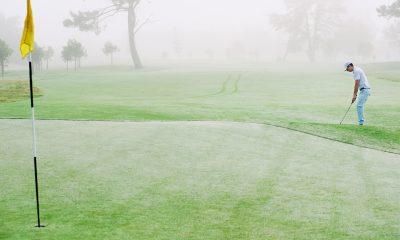

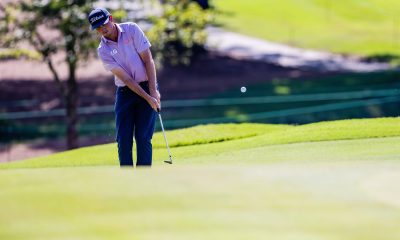

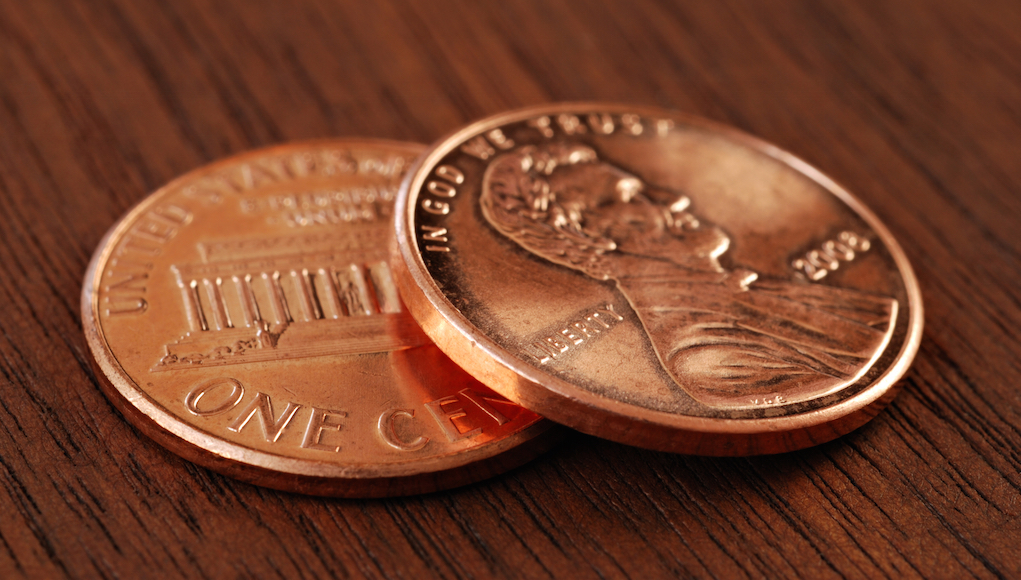

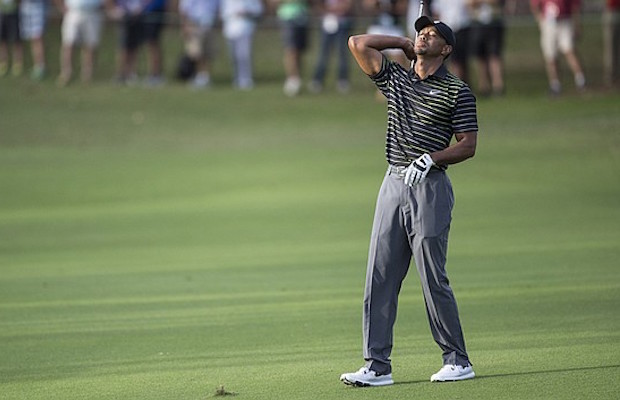
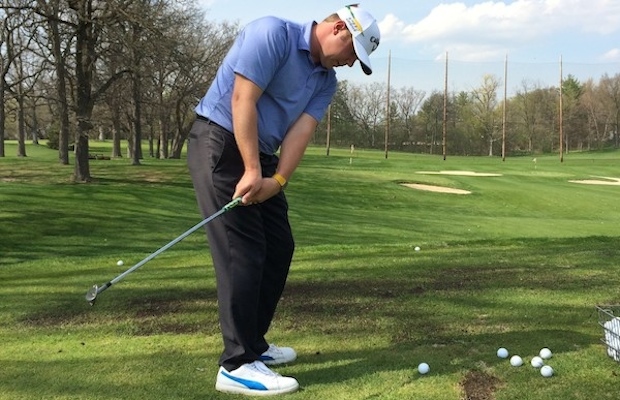








Pingback: Mastering Short Game Shots: Conquer Fear and Doubt! – linkedgreens
Keith W.
Oct 29, 2016 at 7:01 am
The CHIP YIPS ARE REAL! At one time I had a +2.3 handicap and my short game was so good that I was described as “being able to get up-and-down out of a ball washer”…not a bad compliment, and true. Things changed, and for 10 years my short game became a total liability. But I found a fix that worked for me that eliminated the need to think about technique and built trust in my chipping again.
Rather than thinking about the swing or manipulating my wrists, hands, club face or anything else I remembered something I had told and taught to junior golfers…”the club is smarter than you are”. Translation: the club has plenty of loft, and has bounce to accommodate the lie conditions…all it needs is a pilot.
The FIX…instead of letting the hands, arms, and shoulders dictate the results, let the club dictate the shot. This is accomplished by addressing the ball in a slightly more upright position, taking the club back to what is appropriate for the length of the shot and once the backswing is in place simply drop the club from the top of the swing and allow the weight of the head to do its magic on the downswing. I could really feel the head and it works because the club has no fear, no doubt, and no brain. If you try this you will find that the club will do its job as manufactured.
After applying this logic (and a couple of extra pieces of lead tape to and L wedge) in practice for about an hour on a chipping green, I found that I was no longer guiding the club to avoid errant shots, but instead releasing the head again and thereby curing the mechanical failures. After practicing this for a couple of days I took it to the course and had ZERO fat or skulled shots, and in fact reclaimed 90% of my proficiency with my lob wedge.
Fast forward 3 years…since putting this into practice I have cured the chip yips and my confidence in my short game has returned. I don’t even think about it anymore…except for today, writing this advice.
Steve S
Oct 28, 2016 at 9:48 am
Yips are a mental problem that CAN be cured. Confidence cures the yips. Confidence is gained by a lot of successful practice. Successful practice comes from good fundamentals. This applies to all sports and physical activity. A strong willed person can overcome almost any physical problem(pertaining to sports). A weak willed person needs to work on their personality.
tom stickney
Oct 28, 2016 at 2:55 pm
Steve– ever taught someone with the yips before? It’s easy to help them overcome them in practice but when the light comes on during the tournament all bets are off.
Scooter McGavin
Oct 28, 2016 at 4:54 pm
Sorry, Tom, but Steve is mostly right. “Yips” is just a name people made up to make an excuse for their poor performance at something. When the “tournament light goes on” the golfer needs to have put in the appropriate preparation (slow fundamental practice) so they can rely on that. Calling it “the yips” only perpetuates the problem because it makes it sound like a disease that is out of the golfer’s control (“Oh noes, I got de yips!”). Honestly, I think golfers would be much better off if everyone stopped calling it the yips and just said “Hey, I’m having some problems chipping (putting, driving, etc.). I need to go to the chipping green and sort them out with basic, patient fundamental practice”. As a teacher, if someone tells you they have the yips, the best thing you can do for them is tell them there’s no such thing, and that they’ve just developed a flaw they need to work out.
Double Mocha Man
Oct 27, 2016 at 10:52 am
Interesting that you didn’t go on to mention the skulled shots. But, as is obvious, they are the mental (faulty) correction to hitting fat shots. So they go together.
tom stickney
Oct 27, 2016 at 4:24 pm
not always…could be a faulty pivot only.
Charlie
Oct 27, 2016 at 8:27 am
Tiger comment in 3…2…1…
The dude
Oct 28, 2016 at 6:08 am
He is set to retire after 17’….I promise